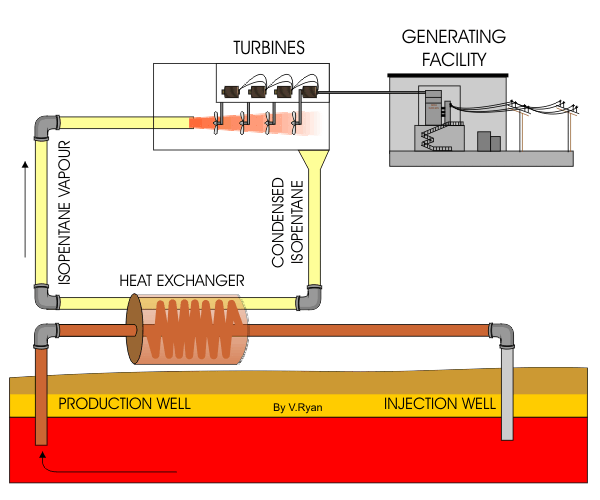Geothermal Binary Cycle Power Plants
Binary cycle power plants use a two-step process to extract power from geothermal water that is not hot enough produce steam to spin a turbine by itself. The water from the geothermal reservoir never comes into direct contact with the blades of the turbine generator and is uses water-based geothermal resources of approximately 200 to 360 degrees F. In the binary cycle system, warm geothermal water is pumped to the surface and passed through a heat exchanger that contains a fluid such as a butane or pentane hydrocarbon with a much lower boiling point than water. The heat from the geothermal water causes this secondary or 'binary' fluid to flash into vapor. The vapor created by heating the pentane is what spins the turbine powering the generator, while the cooled steam from the geothermal source is injected back into the formation where it heats up again and is available to eventually re-circulate through the heat exchanger. That is why geothermal is considered a renewable resource, as a properly managed formation can potentially produce power indefinitely.

The vapor created by heating the pentane is what drives the turbine on the power generator, while the cooled steam from the geothermal source is injected back into the formation where it heats up again and is available to eventually re-circulate through the heat exchanger. That is why geothermal is considered a renewable resource, as a properly managed formation can potentially produce power indefinitely.
Moderate-temperature geothermal water is much more common than high-temperature water and many areas have been identified as having geothermal reservoirs with water that is below 400 degrees F (204 C). The US Department of Energy predicts that most geothermal power plants built in the future will be binary cycle power plants that can take advantage of this slightly cooler water.
Geothermal Binary Cycle Power Plants copyright 2011 Digtheheat.com

